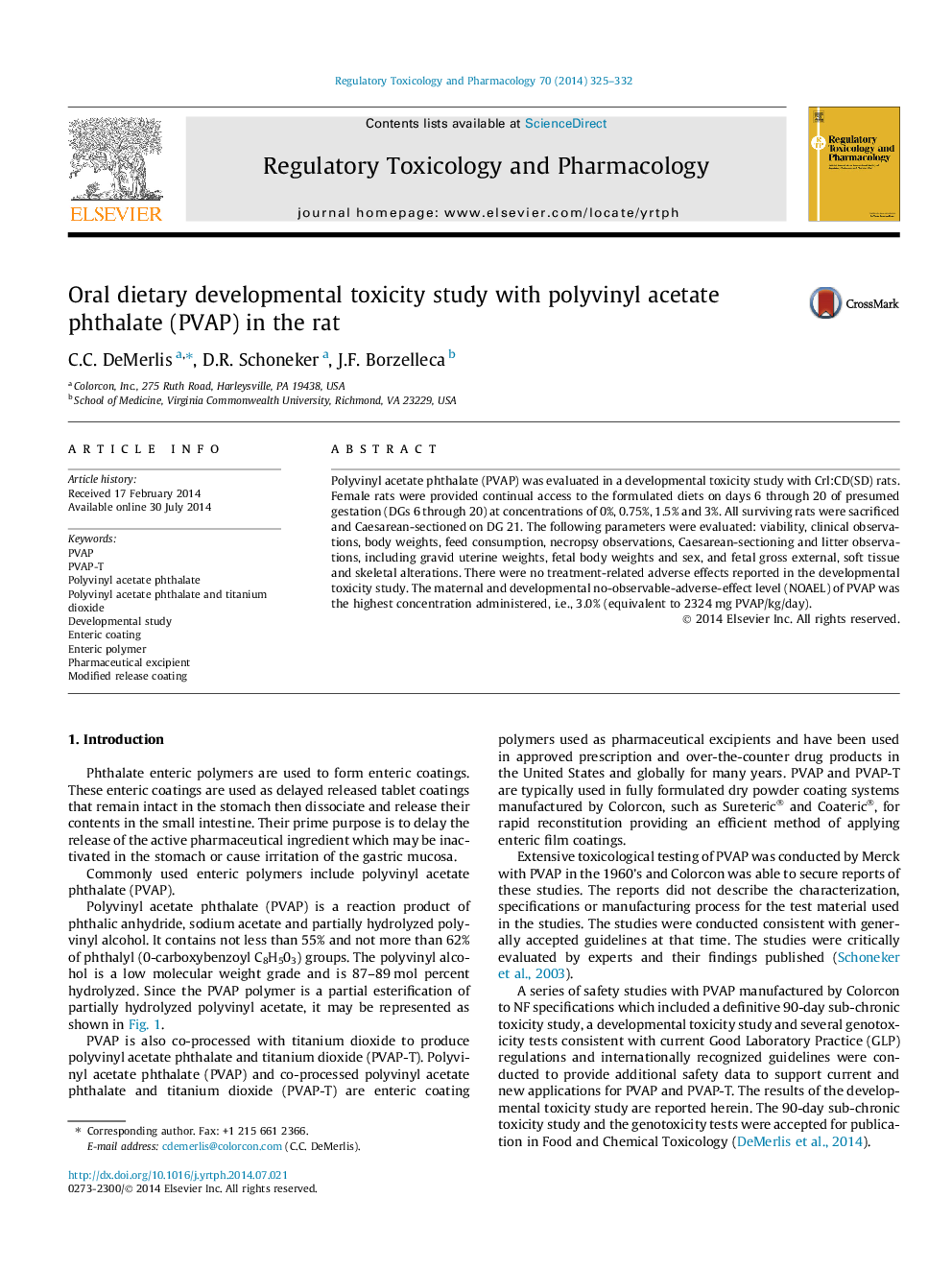| Article ID | Journal | Published Year | Pages | File Type |
|---|---|---|---|---|
| 5856906 | Regulatory Toxicology and Pharmacology | 2014 | 8 Pages |
â¢The safety of PVAP was evaluated in a developmental toxicity study in rats.â¢There were no adverse effects reported.â¢The no-observed-adverse-effect level (NOAEL) was the 3.0% dietary concentration.
Polyvinyl acetate phthalate (PVAP) was evaluated in a developmental toxicity study with Crl:CD(SD) rats. Female rats were provided continual access to the formulated diets on days 6 through 20 of presumed gestation (DGs 6 through 20) at concentrations of 0%, 0.75%, 1.5% and 3%. All surviving rats were sacrificed and Caesarean-sectioned on DG 21. The following parameters were evaluated: viability, clinical observations, body weights, feed consumption, necropsy observations, Caesarean-sectioning and litter observations, including gravid uterine weights, fetal body weights and sex, and fetal gross external, soft tissue and skeletal alterations. There were no treatment-related adverse effects reported in the developmental toxicity study. The maternal and developmental no-observable-adverse-effect level (NOAEL) of PVAP was the highest concentration administered, i.e., 3.0% (equivalent to 2324 mg PVAP/kg/day).
